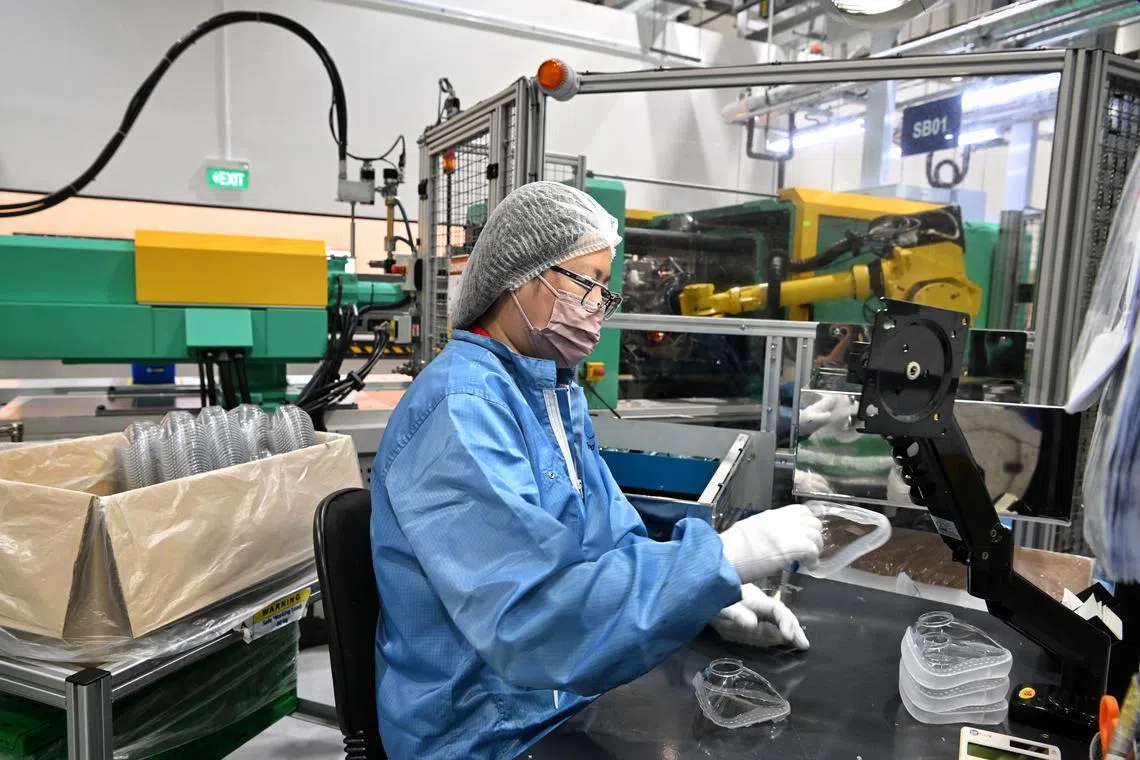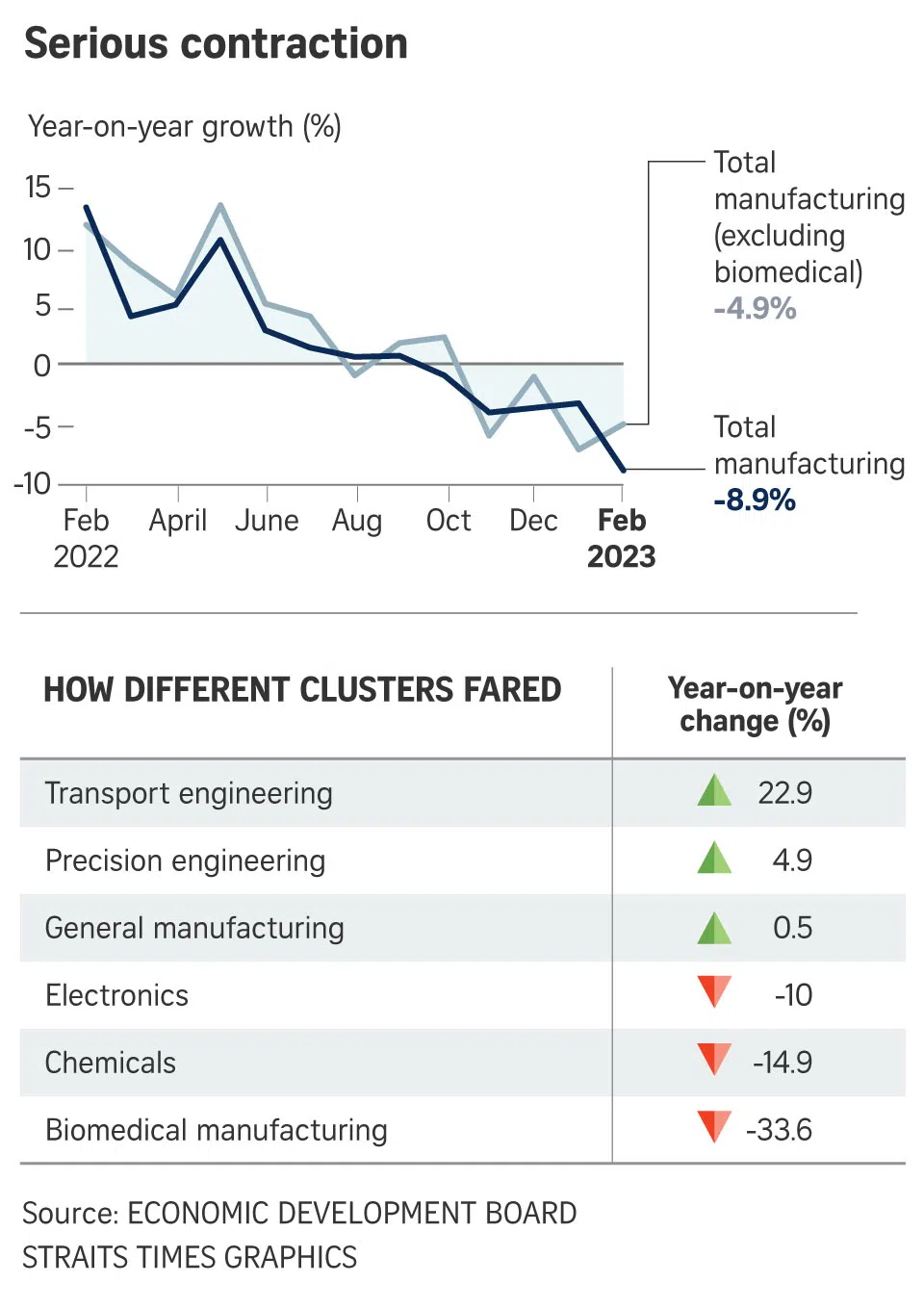S’pore manufacturing slump worsens with 8.9% output drop in Feb
Sign up now: Get ST's newsletters delivered to your inbox

Biomedical manufacturing was the hardest hit, with output tumbling 33.6 per cent year on year in February.
ST PHOTO: CHONG JUN LIANG
Follow topic:
SINGAPORE - Singapore’s manufacturing recession worsened in February as production shrank for a fifth straight month,
Factory output slumped 8.9 per cent year on year in February, after falling a downwardly revised 3.1 per cent in January.
February’s contraction was worse than the 1.8 per cent fall year on year expected by analysts in a Bloomberg poll.
This marked the fifth straight month of year-on-year decline and the worst streak since 2015, said UOB senior economist Alvin Liew.
Excluding the volatile biomedical manufacturing segment, output fell 4.9 per cent.
Biomedical manufacturing was the hardest hit, with output tumbling 33.6 per cent in February on a year-on-year basis.
Mr Liew said that even if the volatility brought by the biomedical manufacturing component was excluded, the latest numbers continue to affirm UOB’s downbeat manufacturing outlook.
“Thus, we maintain our forecast for Singapore 2023 manufacturing to contract by 5.4 per cent due to the worsening electronics down cycle and weaker external demand,” he said.
Maybank economists Chua Hak Bin and Lee Ju Ye called February’s decline in manufacturing as being steeper than expected, despite more working days in 2023 – as Chinese New Year fell in January, compared with early February in 2022.
Singapore’s industrial production weakness was also in line with the steep plunge in real non-oil domestic exports (Nodx).
The economists said: “China’s reopening has not had a meaningful impact on manufacturing and exports so far. We expect China’s reopening to have a more pronounced and visible impact on growth from the second quarter onwards.
“The US banking turmoil has, however, increased the probability of a US recession and will weaken US consumer demand. Probability of a US recession has increased to 57 per cent based on our model...
“Singapore will depend on the boost from China’s reopening to decouple from a US recession.”
The medical technology segment grew 13.7 per cent, with higher export demand for medical devices.
But pharmaceuticals output fell 59 per cent, on account of a different mix of active pharmaceutical ingredients being produced compared with a year ago.
The key electronics cluster saw output contract by 10 per cent year on year, worse than the 4.8 per cent drop in January. It accounts for about 40 per cent of Singapore’s export-driven manufacturing sector.
Chemicals production shrank 14.9 per cent.
The other chemicals segment grew 5 per cent with higher output of fragrances, while the petroleum segment rose 2 per cent on higher demand for jet fuel as air travel continues to rise.
But the specialities segment dropped 8 per cent due to lower production of mineral oil and food additives.
The petrochemicals segment also saw output fall 32.9 per cent on the back of weak market demand and plant maintenance shutdowns.
Singapore’s three other manufacturing clusters saw growth in output. The transport engineering sector saw an increase in output of 22.9 per cent.
The marine and offshore engineering segment expanded 41 per cent, supported by a higher level of shipyard activities as well as increased production of oil and gas field equipment.
The aerospace segment grew 26.1 per cent with higher demand for aircraft parts and more maintenance, repair and overhaul jobs from commercial airlines on the back of increased global air traffic.
Precision engineering and general manufacturing saw output rise by 4.9 per cent and 0.5 per cent, respectively.



